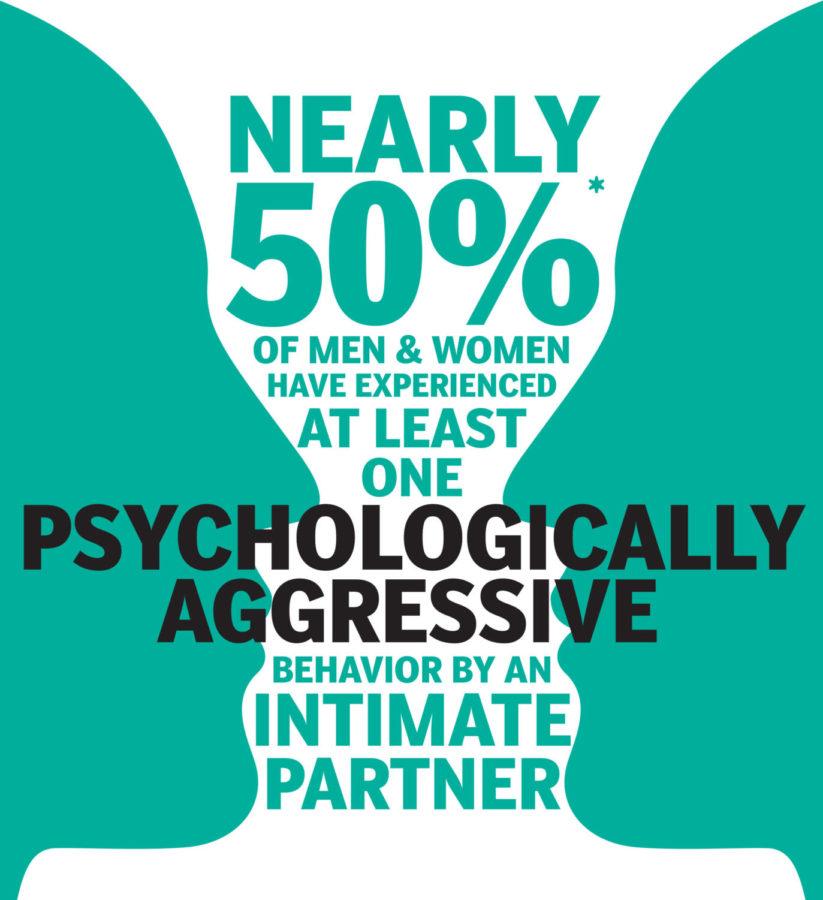Separating gray: Different types of abuses
Nearly 50 percent of men and women have experienced at least one psychologically aggressive behavior by an intimate partner.
January 23, 2017
Trigger warning: This content uses language that may trigger sexual assault survivors.
Sexual assault is a complex and horrible issue. It is personal, it is heartbreaking and it is different in every case. But if we ever want to put an end to sexual assault, we have to stop letting its complexity get in our way.
This is the second story in a semester-long series where the Daily will publish a multitude of stories related to sexual assault, including discussions about various resources survivors can obtain if they are comfortable doing so.
— Emily Barske, editor in chief
Although there may be an emphasis on sexual assault, other types of abuse are certainly not going unnoticed. Counselors and professionals across the nation, including some at Iowa State, have laid the groundwork of the differences and similarities between predominant types of abuse.
Sexual abuse, along with other forms of abuse, is a crime. Therefore, the Department of Justice, DOJ, the nation’s first source of criminal investigation and enforcement, has information on different abuses and the difference between abuse and violence.
The difference between abuse and violence comes down to abuse being defined as intentional impact on the victim, according to DOJ. Violence, in contrast, is a pattern of aggressive behavior.
Because there may be some gray area or overlap between the two, under certain state legislatures, including Iowa, the term “violence” may be interchangeable with “abuse.”
Lorraine Acker, director of the Margaret Sloss Women’s Center, described what an act of violence is.
“If you’re trying to prevent something from leaving their space, if you’re trying to control someone, that’s an act of violence,” Acker said.
Dr. Courtney Clippert-Treadwell, staff psychologist and outreach coordinator in Student Counseling Services, said, “Abuse may not be considered violent, but it can still have that negative impact on somebody.”
Domestic abuse
Domestic abuse is a form of abuse occurring within the household, according to the DOJ. This could include abuse among relationships of those living under the same roof.
“If you’re in a relationship with somebody [or living with somebody], and he or she is physically violent to the point where it is causing bodily harm, that’s considered domestic violence,” Acker said.
Domestic abuse is not necessarily always physical, Acker said. Verbal attacks also can be considered abuse.
“Domestic abuse is any form of abuse that happens within a domestic partnership,” Clippert-Treadwell said. “That can be any form of partnership, not just specific to a marriage.”
Physical abuse
Acker described the living conditions as the pivotal point in the difference between domestic violence and physical abuse.
“Physical abuse is similar to domestic violence, but you may not be living with that person [or be of domestic relationship],” Acker said.
A few examples and signs of physical abuse include “hitting, slapping, shoving, grabbing, pinching, biting, hair pulling,” etc.
Physical abuse can also include any refusal of assistance or care, or usage/consumption of alcohol or drugs against the victim’s will.
Clippert-Treadwell explained that physical abuse can occur in the college atmosphere as well.
“Roommates can be physically violent,” Clippert-Treadwell said.
In her experience, she has seen many cases where a roommate has been physically aggressed toward the other.
Sexual abuse
Sexual abuse is defined by DOJ as “coercing or attempting to coerce any sexual contact or behavior without consent.”
This includes, but is not limited to, “marital rape, attacks on sexual parts of the body, forcing sex after physical violence has occurred or treating one in a sexually demeaning manner.”
Iowa State has established its own lines of what sexual misconduct is.
Sexual misconduct at Iowa State is “any non-consensual behavior of a sexual nature that is committed by force or intimidation, or that is otherwise unwelcome,” according to the ISU Policy Library.
The same policy library defines sexual assault at Iowa State.
“Sexual assault is an extreme form of sexual misconduct and represents a continuum of conduct from forcible rape to nonphysical forms of pressure that compel individuals to engage in sexual activity against their will,” according to the Policy Library.
Furthermore, the Iowa Legislation states:
“[Sexual abuse] is done by force or against the will of the other. If the consent or acquiescence of the other is procured by threats of violence toward any person or if the act is done while the other is under the influence of a drug inducing sleep or is otherwise in a state of unconsciousness, the act is done against the will of the other,” according to Iowa Code 709.1.
In addition to that, one segment addressed the topic of incapability.
“Such other person is suffering from a mental defect or incapacity which precludes giving consent, or lacks the mental capacity to know the right and wrong of conduct in sexual matters,” the code states.
This sense of incapability includes the victim being in a state of unconsciousness.
Emotional abuse
Acker defined emotional abuse as: “Undermining or invalidating someone’s self-worth to the point where there’s a lot of diminishing a person’s ability, name calling, constant criticism. It’s meant to break down a person’s psyche and self-esteem.”
In addition, Clippert-Treadwell added that emotional abuse is not always verbal.
“It is non-violent, but it is a form of control or manipulation,” she said.
Looking ahead, Acker and Clippert-Treadwell spoke about the long-term effects emotional abuse can have.
Acker spoke about the emotional trauma a victim might suffer from, saying they might need to receive psychological help because emotional abuse may lead to depression and suicidal ideations.
Clippert-Treadwell, however, used a metaphor when thinking about emotional abuse.
“I think of a tree, and every time somebody is put down [verbally or emotionally], it is like an axe,” Clippert-Treadwell said. “You’re putting a scar into that tree. The scars fade, but they’re still there.”
Verbal abuse
Often one and the same, Clippert-Treadwell said, verbal abuse and emotional abuse have their differences.
“Verbal abuse is the use of language,” Clippert-Treadwell said. “You’re using your words to harm someone.”
Acker also shared her researched definition of verbal abuse.
“[Verbal abuse] fits into that category of intimidation, challenging, name calling,” Acker said. “So if you’re constantly being told that you are nothing or that something is not right […] in [public and private] settings.”
A big takeaway, Acker said, is that abusers try to intimidate and degrade their victim(s) to gain control. As a result, the long-term effects of verbal abuse are similar to the effects of emotional abuse and psychological abuse; they can cause long-term harm to mental health.
Psychological abuse
Similar to emotional and verbal abuses, Acker reported that there is an umbrella over the different abuses.
“The crux of all these types of violence, the idea of intimidation, fear, control, threatening, shame, guilt,” Acker said.
As a result, psychological abuse is “meant to intimidate […] maybe making them feel guilty,” she said.
Acker added who that could be.
“It could be a friend, partner, family member […] isolating someone from their everyday activities that could cause some emotional trauma and can be seen as psychologically abusive,” she said.
Clippert-Treadwell said psychological abuse and emotional abuse are also one and the same.
Psychological abuse, as well as other forms of abuse, might lead to a “lack of trust in somebody, feelings of worthlessness about yourself, low self-confidence, low self-esteem,” Clippert-Treadwell said.
She also summarized some victims’ thoughts about emotional, verbal and psychological abuse treatment.
“Some people might think it’s not abuse because it does not leave a physical scar, but it is abuse,” she said.
Wrap up
In addition to separating the gray area by putting a label on different abuses, the professionals indicated that there is an additional gray area around different experiences — there is no one way to experience some form of abuse.
Each individual is different, Acker said.
Because of victim blaming she has seen, Clippert-Treadwell said, “This is so prevalent, especially among college students. There is a stigma around it […] because people are afraid they might not receive help. […] We want people to get help. There is help for them. We can help you get past a very dark time in your life.”
“We believe in you.”
















